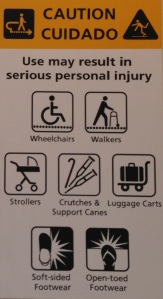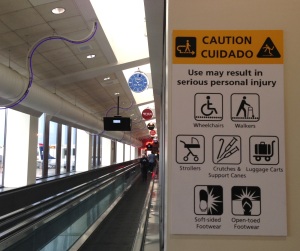 Here’s a perfectly reasonable no-smoking sign (posted adjacent to a building entrance somewhere in Toronto — I forget where.) It says “No smoking within 9 metres or 30 feet.” Fair enough.
Here’s a perfectly reasonable no-smoking sign (posted adjacent to a building entrance somewhere in Toronto — I forget where.) It says “No smoking within 9 metres or 30 feet.” Fair enough.
Why two units of measure? For those who don’t know, Canada is officially on the metric system, but many adults over about 40 are still more comfortable with imperial units for some things. So lots of people are more comfortable measuring short distances in feet rather than in metres. More to the point, many Canadian adults are going to understand this rule better if it is expressed in feet.
Now, compare this sign:

This one is also in Toronto, located on a gate that allows entry into a small municipal park. Notice the difference?
This one says “No smoking within 9 metres or 29.5 feet….” Which, of course, is more accurate than the very approximate translation in the sign above. But is it actually better to be more accurate this way? If you really want accuracy, 9m is actually about 29.5276 feet. But once you go to that level of precision, it becomes obvious that more precision isn’t useful.
I suppose smokers might object to the “30 feet” approximation, since it not only bends the truth but uses that bending to push them half a foot farther away.
This illustrates a very general problem: the tradeoff between accuracy, on one hand, and simple clarity on the other. It also illustrates how a simple technical matter (representation of alternative units of measure) could actually have a differential affect on different people’s interests.


















